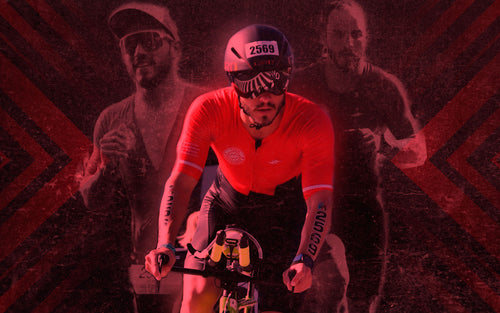Essential Steps When Training for Your First Triathlon
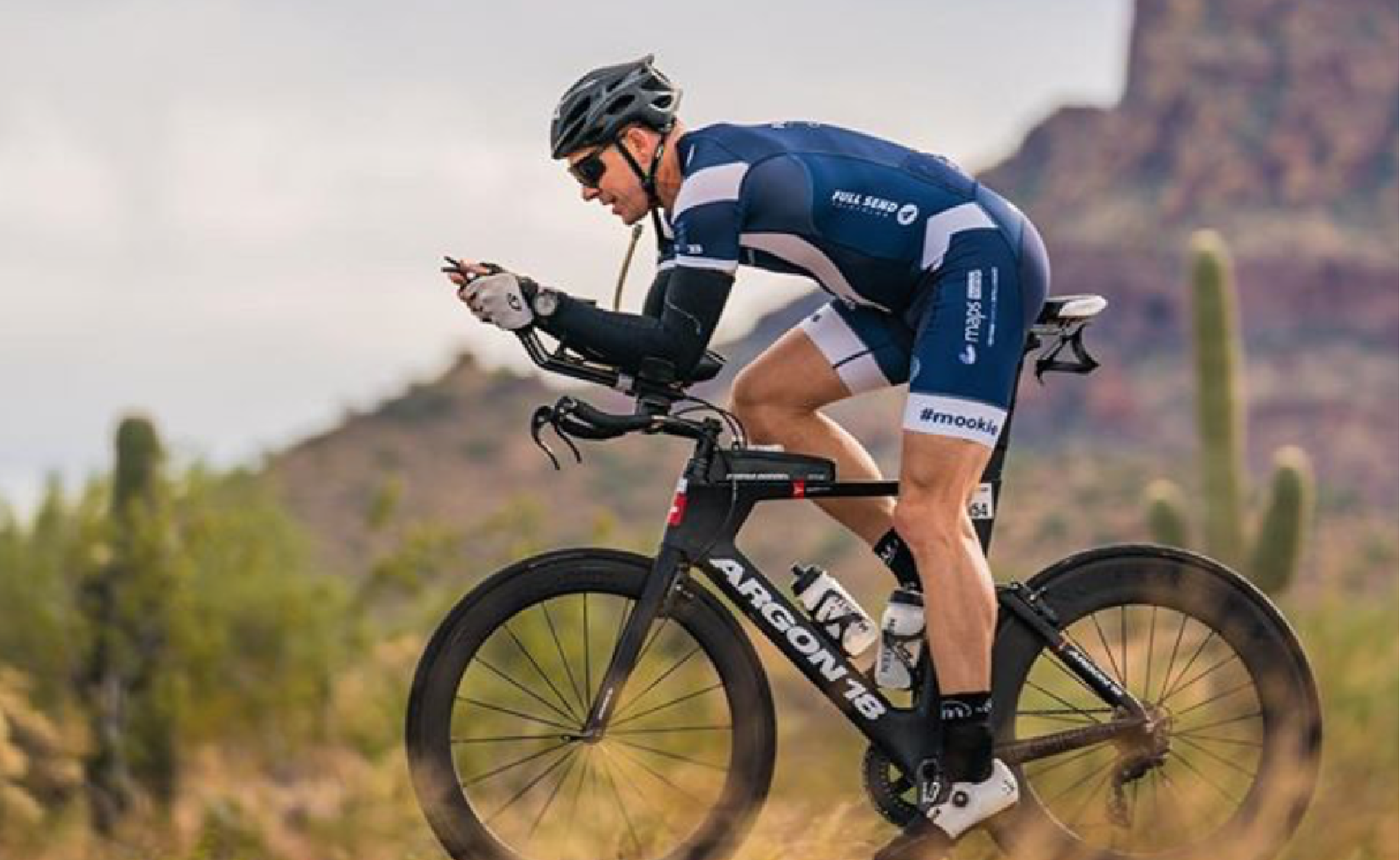
People used to view triathlon as a form of self-torture for endurance junkies. Thankfully we have moved on from those views. Triathlon has gained a major following in recent years, with thousands of men and women participating in the sport.
However, triathlon can still be a bit intimidating for those daunted by the prospect of cycling, swimming, and running in a single event. The learning curve can be a bit steep for first-timers. Below, we will give you a complete guide for training for your first triathlon with maximum results.
I WANT TO KNOW EVERYTHING TO HELP ME TRAIN EFFECTIVELY FOR MY FIRST TRIATHLON
Before we provide you with the necessary tips to help you get ready for your first big event, you should know that triathlon events include a wide range of distances. Although you should always focus on small distances before going for the bigger ones, we will provide you with the complete breakdown of different triathlon events.
1. Sprint
This is the best option for anyone new to the sport. The distances can vary, with the swimming portion 750m, cycling 20km, and running 5km.
2. Olympic
The Olympic distance was first introduced during the 2000 Summer Games held in Sydney, Australia. The race includes covering a distance of 1.5km swim, 40km on the bike, and a 10km run.
3. Half Ironman
Those looking to take their distance level up a notch but are not ready to put forward time commitment for a full Ironman can take part in the Half Ironman. The race venues in this event can be a bit challenging, but the distance is always the same: the swim takes 1.9km, the cycle covers 90km, and the running lasts for 21.09km.
4. Ironman
The Ironman competitions take place all around the world, and is the discipline many view as the World Championship of triathlon. The swimming covers 3.8km, cycling 180km, and the run comprises a full Marathon (42.2km).
WHAT TIPS DO YOU RECOMMEND FOR TRAINING FOR MY FIRST TRIATHLON?
Always be familiar with the type of race, swimming and biking course, which do not seem impossible to achieve.
Swimming Technique
The swimming portion of a triathlon is one of the most challenging for those new to the sport. In case you are new to swimming, then find a coach to teach you the proper technique. The hardest part would be learning the coordination of the breath and stroke, which is essential as with less energy during other events, there is a smaller chance of you coming out as the winner.
When swimming, remember to keep your head down. It is important to breath bilaterally to be able to adjust to the venue, the water conditions, and other swimmers. It is one of the first tips to remember when training for your first triathlon.

Biking Technique
When cycling, think of your foot moving the pedal like the hands of a clock. An efficient race depends on your bike, your fitness level, and the terrain in which the event will take place. Additionally, riding in different gears will help provide you with different levels of cycling. We recommend that you practice shifting gears smoothly on your bike, especially in hilly areas.
One of the most effective methods to practice is outside, which will help you familiarize yourself with the rules of the road. Also remember to use bike lanes as much as possible. You should also practice stopping, starting, turning, slowing down, shifting gears, and most importantly staying hydrated.

Running Techniques
When doing endurance training, lean forward slightly through your chest, relax the hands, and allow the arms to swing forward and back from the shoulders. Also keep your elbows bent at 90 degrees. While each foot hits the ground, think of something hot beneath your feet and lift the foot to keep the next step. The minimal pace should be anywhere between 150 and 180 beats per minute.
Summing Up
There is so much that goes into training for, and racing in, a triathlon but this guide will give you an overview about the sport and its various distances. Be sure to check out the rest of our blog for more information and training tips!

People used to view triathlon as a form of self-torture for endurance junkies. Thankfully we have moved on from those views. Triathlon has gained a major following in recent years, with thousands of men and women participating in the sport.
However, triathlon can still be a bit intimidating for those daunted by the prospect of cycling, swimming, and running in a single event. The learning curve can be a bit steep for first-timers. Below, we will give you a complete guide for training for your first triathlon with maximum results.
I WANT TO KNOW EVERYTHING TO HELP ME TRAIN EFFECTIVELY FOR MY FIRST TRIATHLON
Before we provide you with the necessary tips to help you get ready for your first big event, you should know that triathlon events include a wide range of distances. Although you should always focus on small distances before going for the bigger ones, we will provide you with the complete breakdown of different triathlon events.
1. Sprint
This is the best option for anyone new to the sport. The distances can vary, with the swimming portion 750m, cycling 20km, and running 5km.
2. Olympic
The Olympic distance was first introduced during the 2000 Summer Games held in Sydney, Australia. The race includes covering a distance of 1.5km swim, 40km on the bike, and a 10km run.
3. Half Ironman
Those looking to take their distance level up a notch but are not ready to put forward time commitment for a full Ironman can take part in the Half Ironman. The race venues in this event can be a bit challenging, but the distance is always the same: the swim takes 1.9km, the cycle covers 90km, and the running lasts for 21.09km.
4. Ironman
The Ironman competitions take place all around the world, and is the discipline many view as the World Championship of triathlon. The swimming covers 3.8km, cycling 180km, and the run comprises a full Marathon (42.2km).
WHAT TIPS DO YOU RECOMMEND FOR TRAINING FOR MY FIRST TRIATHLON?
Always be familiar with the type of race, swimming and biking course, which do not seem impossible to achieve.
Swimming Technique
The swimming portion of a triathlon is one of the most challenging for those new to the sport. In case you are new to swimming, then find a coach to teach you the proper technique. The hardest part would be learning the coordination of the breath and stroke, which is essential as with less energy during other events, there is a smaller chance of you coming out as the winner.
When swimming, remember to keep your head down. It is important to breath bilaterally to be able to adjust to the venue, the water conditions, and other swimmers. It is one of the first tips to remember when training for your first triathlon.

Biking Technique
When cycling, think of your foot moving the pedal like the hands of a clock. An efficient race depends on your bike, your fitness level, and the terrain in which the event will take place. Additionally, riding in different gears will help provide you with different levels of cycling. We recommend that you practice shifting gears smoothly on your bike, especially in hilly areas.
One of the most effective methods to practice is outside, which will help you familiarize yourself with the rules of the road. Also remember to use bike lanes as much as possible. You should also practice stopping, starting, turning, slowing down, shifting gears, and most importantly staying hydrated.

Running Techniques
When doing endurance training, lean forward slightly through your chest, relax the hands, and allow the arms to swing forward and back from the shoulders. Also keep your elbows bent at 90 degrees. While each foot hits the ground, think of something hot beneath your feet and lift the foot to keep the next step. The minimal pace should be anywhere between 150 and 180 beats per minute.
Summing Up
There is so much that goes into training for, and racing in, a triathlon but this guide will give you an overview about the sport and its various distances. Be sure to check out the rest of our blog for more information and training tips!
SEE WHAT CUSTOM APPAREL LOOKS LIKE

GEAR UP
MORE FROM THE BLOG
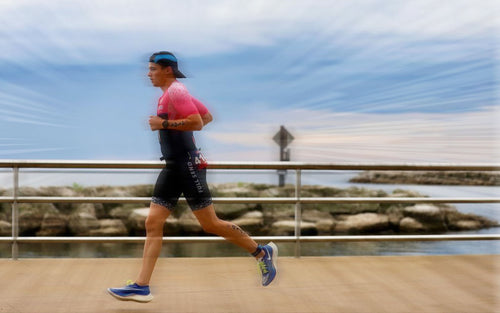
The Perfect Balance: Crafting a Comprehensive Triathlon Training Plan
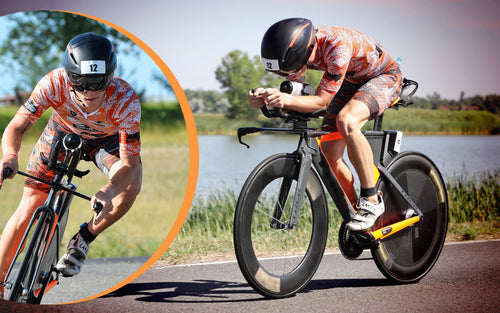
The Power of Custom Athletic Apparel: Boost Your Performance and Confidence
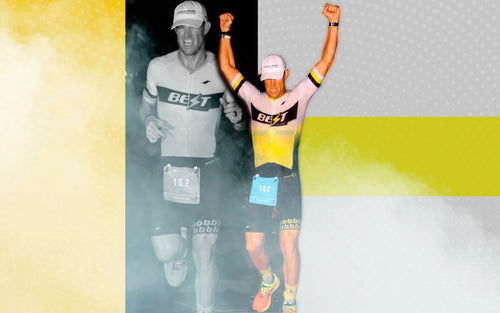
Triathlon Training 101: Proven Strategies for Avoiding Injuries
